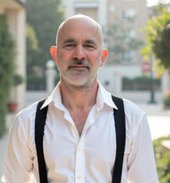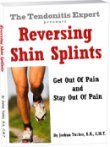Runner Had Heel spur resection and plantar fasciotomy 3 weeks ago
by Tina Ann
( CT)
I am 23 years old and I am a runner. I am 5'1 and 105lb without significant weight changes or changes in physical activity. I began having intense bilateral heel pain after a vacation in the outer banks. I was walking on the beach quite a bit and wearing flip flops... I now will probably never be able to wear them.
I have tried physical therapy, antiinflammatory meds, ice, rest... nothing worked. I went to a podiatrist and discovered through xray I had heel spurs. I then tried custom orthotics, exercise/stretches and several rounds of cortisone injections.
They worked very temporarily (couple days max). I decided to go forth with surgery. At this point it has been 6 months since the start of my symptoms and I am very eager to get back to my normal physical activity. I had a heel spur resection and plantar fasciotomy on February 2, 2012.
The surgery itself was an outpatient procedure. I was not under general anesthesia but I was out. My (L) foot didn't bother me at all. No pain though I'm sure the pain meds helped. I did have some really sharp pain on the top of my foot and went back to my Dr the next morning.
The pain was from the dressing being on too tight. After the dressing was readjusted, it was fine. I ended up stopping the pain meds 2 days post op as the constipation it caused was unbearable. Turns out, I really didn't have foot pain even after I stopped the meds. It has helped to keep the foot elevated and iced.
My podiatrist said to stay non wt bearing for 4-5 weeks. I went back to work 5 days after the surgery. I probably work 30% standing and 70% sitting. Fortunately I work as a dietitian in a nursing home and everyone is very accommodating.
I am now almost 3 weeks post op; stitches were taken out a couple days ago and still on crutches. I am happy to say that I have not had any pain or complications with this surgery yet. I am a little nervous for when I begin walking on my foot but I am eager to start!
After reading some of these stories, it seems like people are starting to weight bear earlier in recovery. Will I be at a disadvantage for waiting 4-5weeks?
----
Joshua Answers:
Hi Tina.
What do you mean by 'disadvantage by waiting...'?
I think you mean, 'is it better to get back on your feet sooner than later'.
The answer is, it just all depends.
It depends on:
* how traumatic was the surgery
* how fast do you heal
* how disruptive to your body's ability to work correctly was the surgery
* how helpful was that disruption to the dynamic that caused the bone spur heel pain in the first place.
All the original factors that cause your bone spurs to develop are still present. Surgery doesn't do anything about that. But they've removed the heel spurs and severed (some of) the structural supports
Now we see what the results are. Will it be better overall, or worse overall?
If you heal fast, in general, MAYBE it's ok to do a small amount of load bearing, and/or light load bearing.
Having said that, if you're a runner and fit the stereotype of 'I want to get back on the road as fast as possible', then you may want to force your self to go easy on the weight bearing and heavy on the movement. Meaning, keep the foot/ankle moving, as much as possible, without weight.
In other words, don't push it, because if you push it and get more rip tear of the surgery site, that's NOT GOOD.
Movement will keep tissue moving and mobile, tissue shortening and lengthening and muscles firing etc.
Weight bearing is fine as long as that doesn't put undue tension on all the affected tissue. Starting early is fine, but rip and tear is bad, so I'd rather be safe than sorry and stay off it.
Having said that, were I to stay off it, I would be rehabbing it like crazy as much as I could. See: Reversing Achilles Tendonitis
Why 'reversing' Achilles Tendonitis? Because while you may not have Achilles Tendonitis, you have all the same factors; muscle and connective tissue tightness, a Process of Inflammation, increased nutritional needs, etc.
See: What Is Tendonitis
The problem with not having any post surgery pain is that you may have an enhanced sense of 'I'm fine', which means you will run around too much on your feet, and then BAM! you realize you just injured yourself. Avoid that at all costs. At least with pain you can get some sense of how much danger you're in.
Bone spurs form because there's too much force pulling on them. The body shapes itself to the forces placed upon it. As I said, the same factors putting undue stress on those spots is still in place. Hopefully the surgery has disrupted that to some degree.
But you may want to deal with them sooner than later.
And the plantar fasciotomy to whatever degree severed the fascial support of the arch of your foot. That's -not- ideal.
Do you know how invasive the fasciotomy was?
What are you doing for post surgery self care and/or rehab?
----------------------
Please reply using the comment link below. Do not submit a new submission to answer/reply, it's too hard for me to find where it's supposed to go.
And, comments have a 3,000 character limit so you may have to comment twice.
-----------------------

Joshua Tucker, B.A., C.M.T.
The Tendonitis Expert
www.TendonitisExpert.com
| |
| Share Your Story Achilles Tendonitis Surgery Stories Carpal Tunnel Surgery Stories Plantar Fasciitis Surgery Stories Nerve Conduction Test Stories Share YOUR stories (and horror stories!). |
Comments for Runner Had Heel spur resection and plantar fasciotomy 3 weeks ago
|
||
|
||
|
||
|
||
|
||
|
||
|
||
|
||



